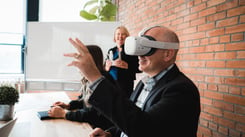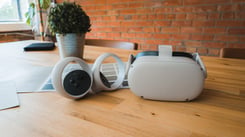Most of the attention that today's Virtual Reality technology gets is focused on its uses in the gaming and entertainment world. But any architect or interior designer who's half awake knows that the A&D community is in the middle of a VR revolution: and it's not over yet. Here are two ways VR changing architecture and design already. Who knows what'll be next?
New client experience
The way your clients experience the collaboration process will be unlike they've ever experienced before. Instead of attempting to visualize their project from a piece of paper, they'll know exactly what you've got in mind and exactly what they're getting prior to construction. This reduces hesitation, improves their decision-making abilities and makes them feel a lot more comfortable about the process--which, for most non-designers, can be an intimidating one. Being able to place your clients in your designs, and guide them through the entire experience with tools like Yulio's collaboration feature, is a first-class experience they can't help but love. But with new experiences come new expectations. Once your clients have experienced VR-assisted collaboration, nothing else will compare. Next time around, you can be sure there's one thing they'll be asking for.
New services = new revenue stream
With new technology comes new opportunities for adding value to clients--and, well, making money. Take one of our clients--a major Canadian design firm - who use Yulio to offer a service they'd never been able to offer before. The firm created a new service offering and revenue stream entirely around designing 'virtual' designs for empty units for sale by one of Canada's top 10 national real estate companies. Before this, the real estate company was spending $50-$60 per square foot to construct a real-life demo unit. So, their new virtual demo arrangement is a win for both parties. And can you guess who the buyers turn to when it's time for real design work?



.jpg?width=245&height=150&name=active-adult-beautiful-1799244%20(1).jpg)


